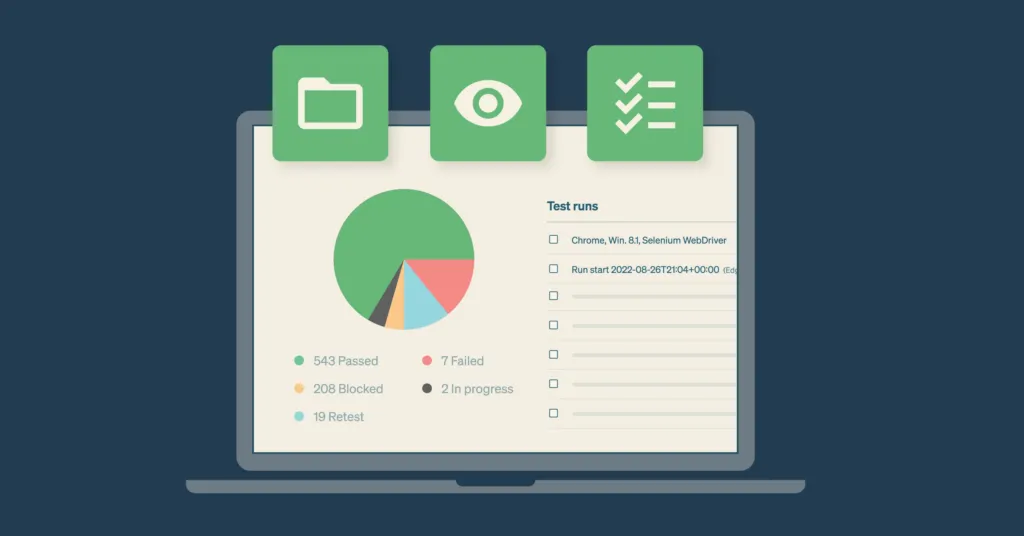What is Tarantula Test Tool?
Tarantula is a comprehensive test management tool designed to streamline and optimize the software testing lifecycle. It offers a centralized platform for managing test cases, executing tests, tracking defects, and generating insightful reports. This tool helps teams collaborate more effectively, improve test coverage, and ultimately deliver higher-quality software products. Unlike many basic testing solutions, Tarantula provides robust features tailored for complex projects, making it suitable for both small and large organizations. The tool’s intuitive interface simplifies the testing process, allowing testers to focus on identifying and resolving issues rather than struggling with complicated procedures. Its powerful reporting capabilities provide valuable insights into the testing process, enabling teams to make data-driven decisions to improve their testing strategies.
Key Features of Tarantula
Tarantula boasts a rich set of features that set it apart as a leading test management solution. The platform’s test case management module supports creation, organization, and version control of test cases. This module facilitates easy collaboration among team members, ensuring everyone has access to the latest versions and details of test cases. Another key feature is its test execution capabilities, which allow for automated and manual test runs. It supports various testing methodologies and offers detailed test results tracking. Furthermore, Tarantula provides comprehensive reporting and analytics, including customizable dashboards and real-time progress tracking. These reports help teams identify trends, measure test coverage, and assess the overall quality of the software under test. Integration capabilities are also strong, allowing seamless connections with other tools and platforms used in the software development workflow.
Setting Up Your Tarantula Demo

Setting up a Tarantula demo is a straightforward process designed to give you hands-on experience with the tool’s features. Initially, you’ll likely need to request a demo account or a trial version from the official Tarantula website. This typically involves providing some basic information about your organization and testing needs. After receiving your credentials, you’ll log in to the platform and begin exploring the user interface. The setup process often includes importing test cases or creating new ones to simulate a real-world testing scenario. The demo environment also allows you to experiment with different features, such as test execution, defect tracking, and report generation. Make sure to review any provided tutorials or documentation to familiarize yourself with the tool’s navigation and functionalities, thereby maximizing your learning experience during the demo session. Furthermore, utilizing the demo to its fullest potential ensures that you can efficiently assess whether Tarantula meets the unique requirements of your testing projects.
Step-by-Step Guide to Using Tarantula
Using Tarantula effectively involves several key steps. First, you’ll create or import your test cases into the system, defining the test steps, expected results, and any necessary prerequisites. Next, organize these test cases into test suites for efficient grouping and execution. When you are ready to run your tests, select a test suite and initiate the execution process, either manually or through automated means. During execution, meticulously record the results of each test, noting any failures or defects encountered. Utilize the defect tracking feature to log, prioritize, and manage any issues identified during testing. Finally, use the reporting and analytics tools to generate reports, analyze test coverage, and identify areas for improvement in your testing process. Regular use of these steps ensures that you are using the full power of Tarantula to maximize the software testing efficiency.
Creating and Managing Test Cases
Creating and managing test cases is a core function within Tarantula. The tool provides a user-friendly interface for creating test cases with detailed steps and expected outcomes. You can define test case properties such as priority, severity, and assigned testers. The platform supports various test case formats, including both manual and automated tests. To manage test cases effectively, use features like version control to track changes and updates, ensuring that test cases are always up to date. Organize test cases into logical groups, using test suites or test cycles, for efficient planning and execution. Use the search and filter options within Tarantula to quickly find specific test cases or filter by status, tester, or other criteria. Collaboration is streamlined because team members can access, update, and review test cases, promoting a consistent approach to testing. Regular review and maintenance of test cases ensure that they remain relevant and effective.
Executing Tests and Analyzing Results

Executing tests and analyzing the results is a crucial process within the Tarantula test tool. During test execution, you can monitor the progress, track individual test steps, and record results. If a test fails, you can immediately create a defect report and link it directly to the failed test case, which streamlines the debugging process. Tarantula supports both manual and automated test execution, allowing you to integrate with automated testing frameworks. After execution, the platform provides detailed reports on test results, including pass/fail rates, test coverage, and defect statistics. Analyzing these results enables you to identify areas of weakness in the software, determine the effectiveness of your testing efforts, and make informed decisions to improve software quality. The reporting dashboards offer real-time insights, allowing for continuous monitoring of test progress and immediate responsiveness to emerging issues. By leveraging these tools, you ensure a comprehensive and effective testing strategy.
Generating Reports and Dashboards
Tarantula excels in providing robust reporting and dashboard capabilities. The platform offers a variety of pre-built reports that present test results in easy-to-understand formats, including charts and graphs. You can generate reports on test execution progress, defect trends, test coverage, and other key metrics. These reports can be customized to meet the specific needs of your project. Customizable dashboards offer real-time insights into the testing process, allowing stakeholders to monitor progress at a glance. You can configure these dashboards to display the metrics most relevant to your project. The reporting features support exporting data in various formats, such as PDF or CSV, for sharing and analysis. Regularly reviewing these reports and dashboards allows you to track trends, identify bottlenecks, and make informed decisions to improve testing effectiveness. Through these reports, project managers can gain visibility into the status of testing and identify potential risks.
Advanced Features and Integrations
Tarantula offers several advanced features and integrates with other tools to enhance its utility. The tool supports integrations with various testing frameworks, such as Selenium, JUnit, and TestNG, allowing you to import and manage automated tests. Its robust API allows you to connect with other development and testing tools. Advanced features may include support for risk-based testing, which prioritizes testing efforts based on the potential impact of defects. Additionally, many organizations use Tarantula to integrate with defect tracking systems, such as Jira and Bugzilla, allowing for seamless issue management. User management features provide fine-grained control over access and permissions, ensuring data security and compliance. Leveraging these advanced features and integrations enhances the overall efficiency of the software testing process, providing more streamlined workflows and more effective software development practices. These capabilities empower development teams to deliver superior software quality while optimizing their testing processes.
